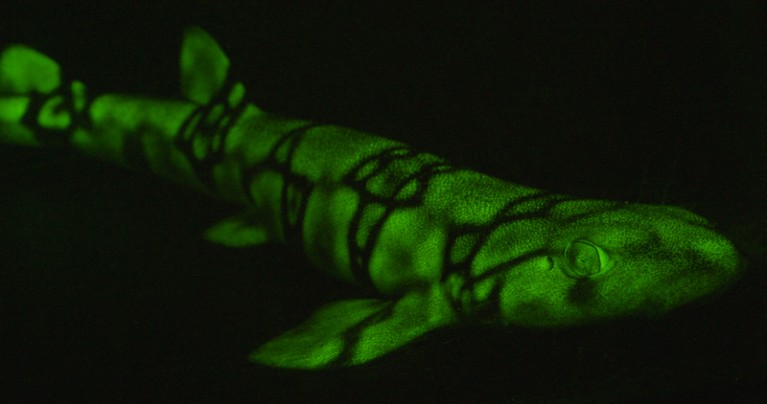Hello Nature readers, would you like to get this Briefing in your inbox free every day? Sign up here.

China is planting trees to stop deserts expanding.Credit: Wang He/Getty
Fine-tuning China’s Great Green Wall
China has planted billions of trees over the past four decades as part of its fight against expanding deserts. The trees have held back the sand, but some scientists are questioning the long-term wisdom of planting thirsty non-native species in dry areas (which are getting even dryer, thanks to climate change). The country’s efforts are turning towards keeping existing vegetation healthy and planting shrubs and herbs that are better adapted to the desert.
Google claims quantum supremacy breakthrough
Google has achieved “quantum supremacy”, the impressive name for when a quantum computer outperforms a classical one on a given calculation. The Google quantum computer “was able to perform a calculation in three minutes and 20 seconds that would take today’s most advanced classical computer, known as Summit, approximately 10,000 years,” reports the Financial Times, based on a leaked paper by Google’s researchers.
Theoretical computer scientist Scott Aaronson, who says he’s familiar with the research, kindly takes us through the meaning and implications of the milestone in a very readable post on his personal blog.
Financial Times | 4 min read & Scott Aaronson personal blog | 15 min reads
Read more: The race for quantum supremacy hits a theoretical quagmire (Nature, from 2017)
Ebola vaccine not reaching enough people
The aid organization Médecins Sans Frontiéres (MSF) says that the World Health Organization (WHO) is not distributing Ebola vaccine widely enough in the Democratic Republic of the Congo (DRC). An epidemic of the virus in the DRC has killed more than 2,100 people since August 2018. The aid agency says that “only a fraction of the eligible population” has received the vaccine — roughly 225,000 of the 600,000 people that the group estimates should have received the shot. But the WHO argues that MSF has overestimated how many people should be vaccinated.
CRISPR might be the banana’s only hope
The race to engineer the next-generation banana is on. The Colombian government confirmed last month that a banana-killing fungus has invaded the Americas — the source of much of the world’s banana supply. Researchers are working on inserting genes from wild bananas or using the gene-editing tool CRISPR to boost resilience to the scourge.
FEATURES & OPINION
One man’s plan to map everything
Ecologist Thomas Crowther’s goal is nothing less than restoring the planet. He and his colleagues are amassing thousands of individual observations and weaving them into large-scale conclusions: for example, they have counted the world’s trees (3 trillion) and its most abundant animals, nematode worms (0.4 sextillion). His fans say he is part of a new wave in ecological research, using machine learning on vast, scattered data sets to tease out broad patterns about the state of the planet. His critics think he is trampling on nuance and oversimplifying — sometimes dangerously so.
A journal club to fix science
ReproducibiliTea is a community of grass-roots journal clubs for discussing open and reproducible science. Co-founder Amy Orben describes how the initiatives can help early-career researchers grapple with the problems in the scientific process and push for bottom-up change.
How to move the levers of power
Want your government to increase funding for research? There is no magic to advocating effectively, says neuroscientist Joe Luchsinger — it just takes is preparation and practice. From refining your goal to choosing the right legislator to lobby, Luchsinger outlines eight tips for scientists who want to influence policy decisions.
IMAGE OF THE WEEK

Credit: David Gruber
This species of catshark (Scyliorhinus retifer) is biofluorescent — its skin absorbs blue light from the ocean and then emits light with a longer wavelength, creating patterns that can be seen only by other sharks. Researchers discovered that this is down to a previously undescribed family of small molecule metabolites present in the tiny tooth-like scales that make up the sharks’ skin.
See more of the most spectacular images of the month, as selected by Nature’s photo team.
